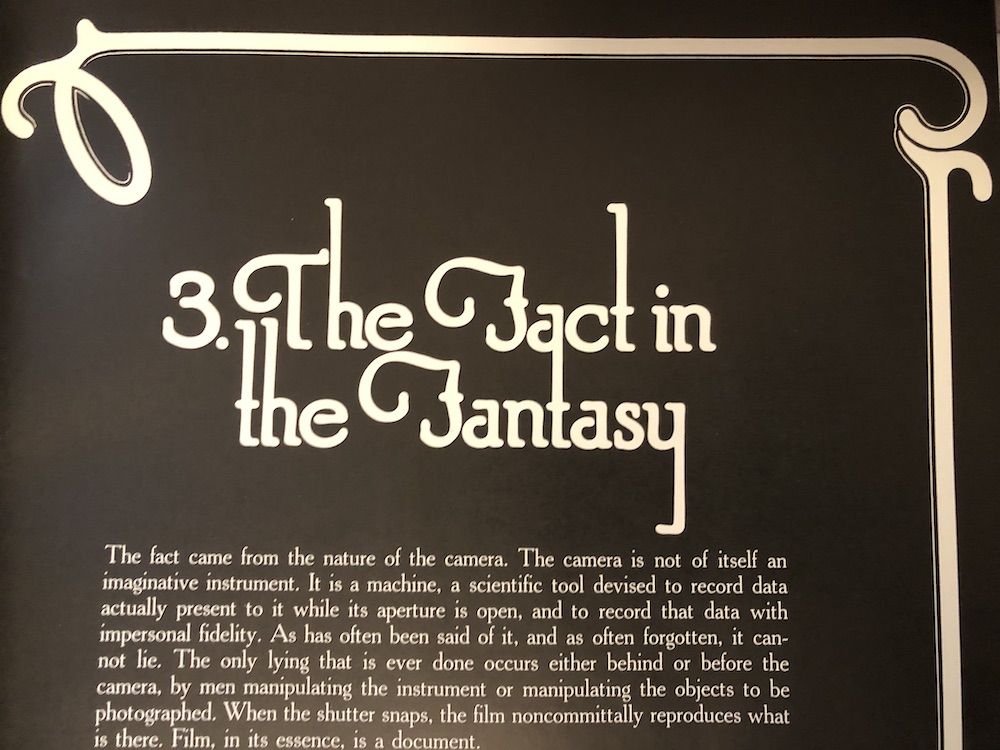Chapter 3, “The Fact in the Fantasy”, reminds us that Silent Film – although silent, monochromatic and slightly faster – is still a capturing of reality on celluloid. Regardless of the aspects of the medium that are either what make it a unique expression or are seen as handicaps, it’s still film. Unlike painting or live-performance, what the view of the moving-image camera’s capture is a near-mirror of exactly what was in front of it.
For me, it’s the skewing of reality in Silent Film’s storytelling or depiction of pieces of physical action, that makes this a unique medium.
There may be some stage-craft or careful camera placement involved, but our expectation of reality that that is in fact Harold Lloyd hanging off the side of a building several stories up, that we are seeing Douglas Fairbanks sliding down a three-story tapestry, that those troops John Gilbert is marching with are people marching on a dirt road, etc.
Silent Film acknowledges our expectation of reality, because of the amount trust we put in what we’re being shown, and combines that reality with the ability to create a different one simple by leaving out details of story or physical action out, by the absence of full color, and by tweaking the speed of that reality. These traits were never intended, of course. But I can’t help imagining they were noticed and then exploited by Silent Film’s makers, either consciously or deliberately or not.
These were, originally, borne out of technological hindrances and a making-it-work but as the silent era went on, people got more and more inventive and creative about it.
The first post in this series is here.
The previous post to this one is here.
Copies of The Silent Clowns turn up on eBay.
(Rest assured…I’m not going to describe and discuss every chapter in The Silent Clowns in this series of posts. I’ve set out here to write posts about my own findings, impressions and experiences with understanding the language of Silent Film here. The opening chapters of Walter Kerr’s book, as it turns out, form the foundation of most of this, and so this is what I’m leading off with in the first week of these blog posts.)
